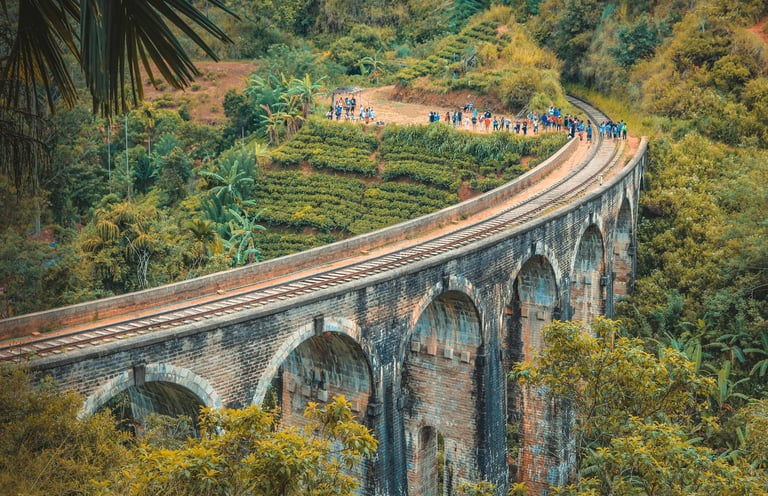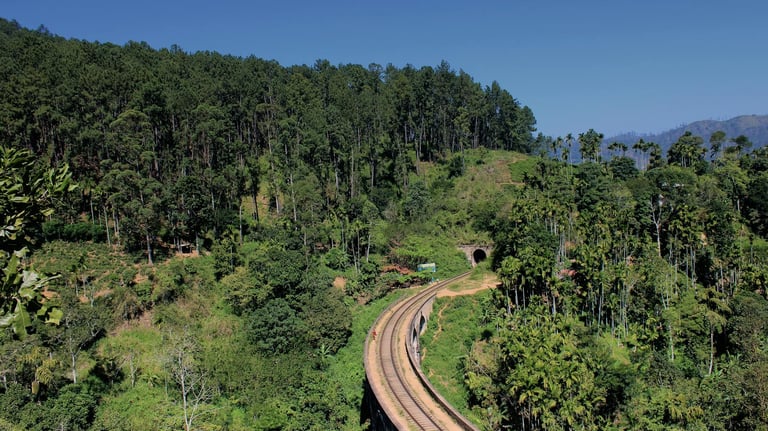What began as a vision by British colonial planners was transformed by the exigencies of war into a remarkable feat of engineering, completed entirely in stone and cement by the skilled hands of Sri Lankan engineers. The History goes back to 1921 just before WW1
Envisaging the Bridge
Initially conceived as a steel structure to connect strategic points across Sri Lanka's landscape, the bridge was envisioned as a vital artery for transportation and commerce. Its design reflected the ambitions of British colonial authorities to modernize and develop the island's infrastructure.
The Impact of World War 1:
However, the outbreak of World War 1 dramatically altered the trajectory of the bridge's construction. With the urgent need for steel to support the war effort, plans for the steel bridge were put on hold indefinitely. The conflict demanded all available resources, leaving little room for ambitious construction projects.
Total length : 91 m (300 ft)
Width: 7.6 m (25 ft)
Height: 24 m (80 ft)
No. of spans (Arches): 9




9 Arch Bridge, Ella
Kandy to Ella-The train line
9 Arch Bridge
The story of the British-Sri Lankan Bridge stands as a testament to human resilience, adaptability, and ingenuity in the face of adversity.



